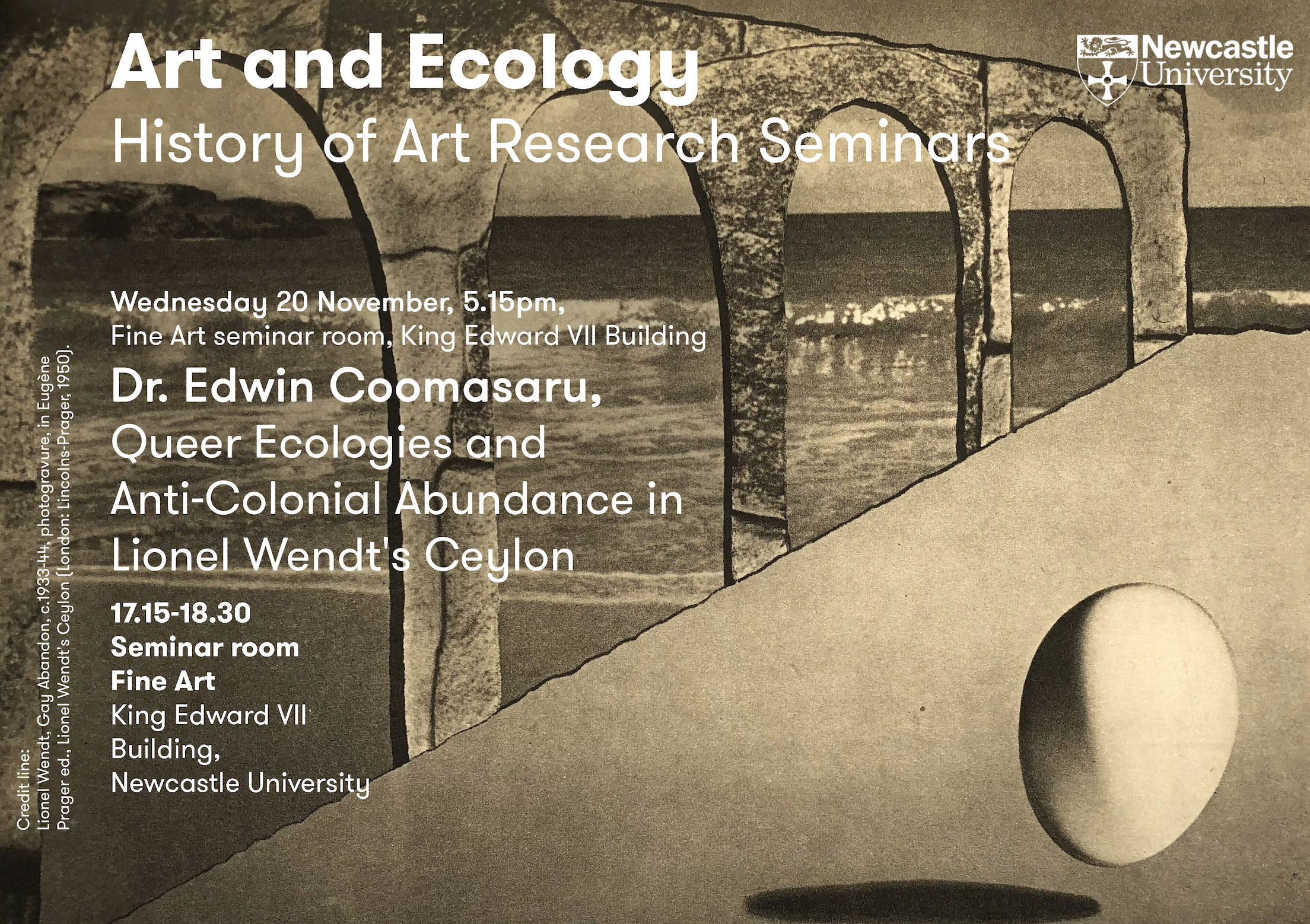
Wednesday 20 November, 5.15pm, Fine Art seminar room, King Edward VII Building
Dr Edwin Coomasaru, ‘Queer Ecologies and Anti-Colonial Abundance in Lionel Wendt’s Ceylon’
Published posthumously in 1950, queer Sri Lankan photographer Lionel Wendt’s photobook Ceylon crafted an aesthetic of queer environmental abundance. Taken between 1933 and 1944, his surrealist and documentary-style photographs were shaped by and contributed to rising tides of national consciousness and anti-colonial movements ahead of the island’s independence. British rule (1796-1948) had destroyed common land and outlawed homosexuality for being ‘against the order of nature’, organising Sri Lanka around an extractive plantation economy – managing sexual politics to produce a colonial workforce and manufacturing resource scarcity to extract wealth to the UK. Ideas of environmental abundance from the island’s folklore carried a very different conception of the land: one enchanted with spiritual knowledge and used sustainably. In the context of such belief systems, Wendt challenged British control over both ecology and sexuality, imagining alternative possibilities. Drawing on a queer ecological methodology and decolonial theory, this lecture will argue that Ceylon celebrated a queer environmental abundance.
Dr Edwin Coomasaru is a historian of modern and contemporary British, Irish, and Sri Lankan art; as well as being an editor of the journal Visual Culture in Britain. He has been awarded Postdoctoral and Research Fellowships at the University of Edinburgh, The Paul Mellon Centre for Studies in British Art, and The Courtauld Institute of Art. Coomasaru previously worked as a Research Assistant on the Association of Art History’s anti-racist and decolonial resource portal. Formerly a Contributing Editor at British Art Studies, he has also co-edited a book on Imagining the Apocalypse: Art and the End Times (Courtauld Books Online, 2022). Coomasaru has written articles and reviews for Art History, Third Text, The Irish Review, Irish Studies Review, Oxford Art Journal; as well as art criticism for The Irish Times, ArtReview Asia, Art Monthly, Photoworks Annual, Burlington Contemporary, Architectural Review, Frieze; alongside exhibition essays for The Barbican Centre, Autograph, The Photographers’ Gallery, Belfast Exposed, Townhall Cavan, Jhaveri Contemporary, Saskia Fernando Gallery.
Lionel Wendt, Gay Abandon, c.1933-44, photogravure, in Eugène Prager ed., Lionel Wendt’s Ceylon (London: Lincolns-Prager, 1950). Photo: Edwin Coomasaru.
